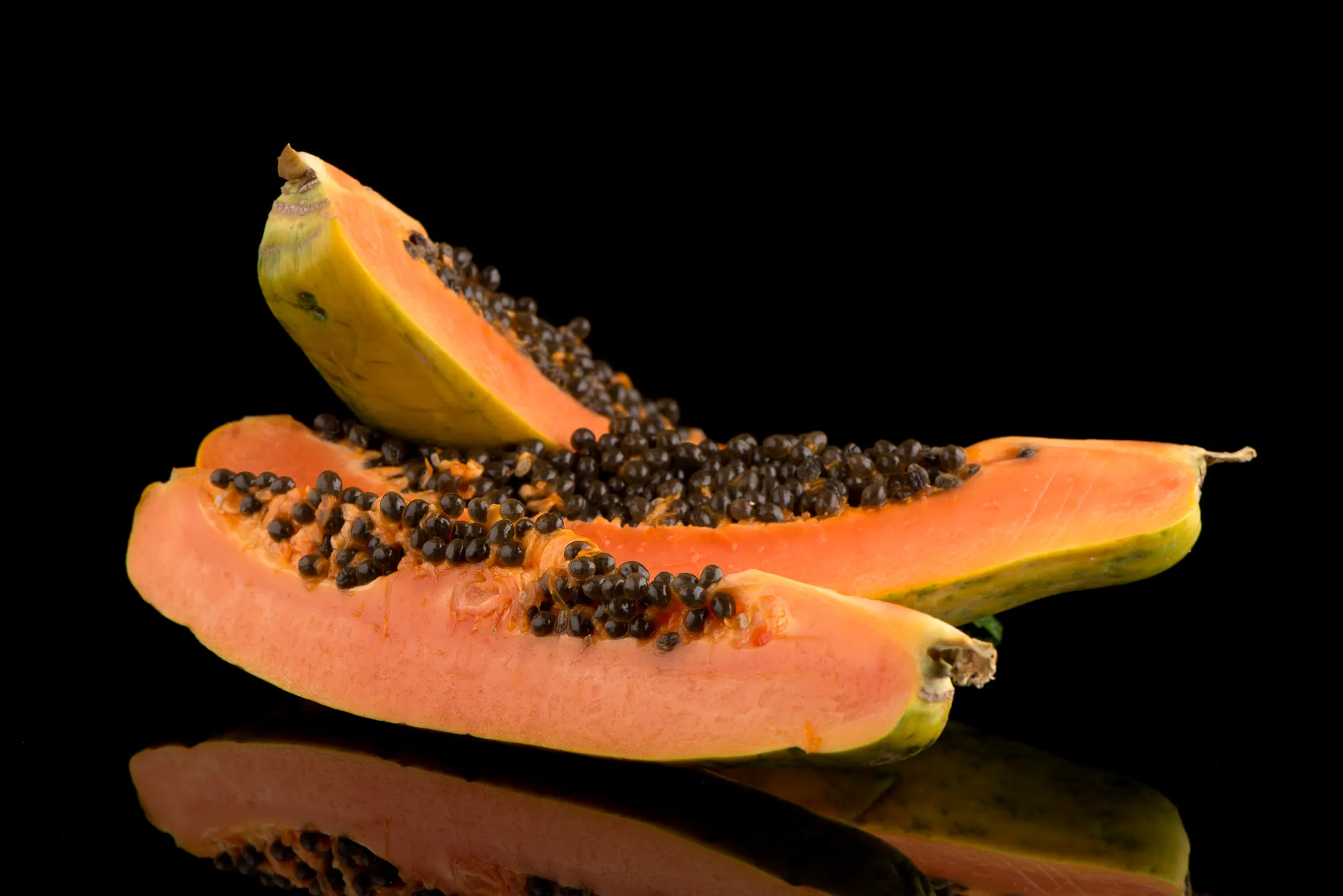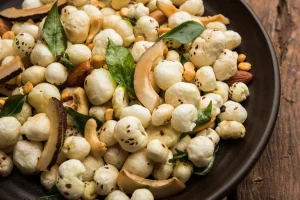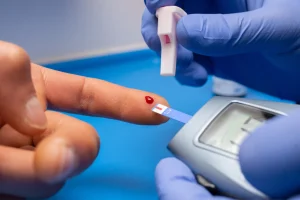Managing diabetes often means being extra careful about what you put on your plate. Fruits, while naturally nutritious, are often debated because of their sugar content.
One fruit that commonly raises questions is papaya. Many people wonder: Is papaya good for diabetes, or should it be avoided?
The short answer is: yes, papaya can be a healthy choice for people with diabetes when eaten in moderation. But like all foods, it’s about how much and how often. Let’s break it down.
Why Fruits Matter in Diabetes?
Fruits are packed with fibre, vitamins, minerals, and antioxidants. For people with diabetes, the challenge lies in balancing their natural sugars (fructose) with overall blood sugar control.
Some fruits spike glucose levels quickly, while others have a gentler impact. That’s where papaya often shines.
⇒ ⇒ Read More: What is a Diabetes Chart?
Papaya Nutrition (per 100 g)
| Nutrient | Raw Papaya | Ripe Papaya | Benefit for Diabetes |
| Energy | 43 kcal | 27 kcal | Low-calorie, supports weight management |
| Carbs | 9 g | 6.2 g | Moderate sugar load |
| Fiber | 1.7 g | 2.1 g | Slows sugar absorption |
| Vitamin C | 61 mg | 60.9 mg | Reduces oxidative stress |
| Potassium | 182 mg | 182 mg | Supports heart health |
Source: FoodStruct
Why Papaya Can Work for Diabetes?
Papaya is light, easy to digest, and packed with nutrients that support blood sugar management. For many in India, it is also affordable and widely available.
- Medium Glycemic Index (GI 38–60): Papaya has a GI that ranges from 38 (low) to about 60 (medium), depending on ripeness. This means it causes a slower rise in blood sugar compared to fruits like watermelon (GI 72). Still, portion size matters.
- Fibre Content: A 100g serving of ripe papaya provides about 1.7g of fibre. Fibre slows the absorption of carbohydrates, helping reduce post-meal sugar spikes.
- Antioxidants and Micronutrients: Papaya provides the following:
- ⇒ Vitamin C – helps reduce oxidative stress linked to diabetes complications
- ⇒ Beta-carotene – supports immunity and is converted to Vitamin A
- ⇒ Flavonoids – plant compounds with anti-inflammatory properties
- Aids Digestion and Gut Health: Papain, a natural enzyme in papaya, supports digestion and may improve gut health. A healthy gut is increasingly recognised as important for blood sugar regulation and metabolism.
Benefits of Papaya for People with Diabetes

- Supports Blood Sugar Regulation: The fibre in papaya slows down sugar absorption, helping prevent sudden spikes. Fibre also promotes satiety, reducing overeating and sugar cravings.
- Rich in Antioxidants: Papaya is loaded with vitamin C, vitamin A (beta-carotene), and flavonoids. These antioxidants help combat oxidative stress, which is higher in people with diabetes and linked to complications like nerve damage and heart disease.
- Aids Digestion and Gut Health: Papain, a natural enzyme in papaya, supports digestion and may improve gut health. A healthy gut is increasingly recognised as important for blood sugar regulation and metabolism.
- Heart-Protective Effects: Diabetes raises the risk of cardiovascular disease. Papaya’s potassium, fibre, and antioxidants contribute to lower blood pressure, better cholesterol control, and overall heart health.
- Supports Weight Management: Papaya is naturally low in calories and high in water. For people aiming to lose or maintain weight (a key factor in type 2 diabetes management), it’s a satisfying, guilt-free snack.
⇒ ⇒ Read More: 6 Easy Steps to Prevent Diabetes
The Science in Simple Words
- Fibre slows sugar release, reducing spikes
- Antioxidants protect against diabetes complications
- Medium GI fruits like papaya can be safe if eaten in small amounts
- Some early animal studies suggest papaya leaf extract may improve insulin sensitivity, but human evidence is still limited
Read More: Fast vs. Slow Metabolism: What’s the Difference & Which is Better for You?
How to Eat Papaya Safely with Diabetes?
- Watch Portion Size: Stick to about ½ to 1 cup of papaya per serving. Eating an entire large papaya in one go can lead to excess carb intake.
- Pair It with Protein or Healthy Fats: Combine papaya with a handful of nuts, seeds, or yoghurt to slow digestion and reduce sugar spikes.
- Prefer Fresh Over Juiced: Papaya juice (especially packaged) removes fibre and concentrates sugar, making it less diabetes-friendly. Whole fruit is the better choice.
- Eat It Earlier in the Day: Consuming fruits like papaya earlier allows your body more time to use the natural sugars for energy.
- Track Your Blood Sugar: Since every individual responds differently, use a glucometer or smart CGM (Continuous Glucose Monitor) to check how papaya affects your glucose levels.
⇒ ⇒ Read More: What are the 7 Signs of Slow Metabolism in Females?
How Papaya Fits into a Diabetes Diet?
Nutritionists often recommend following the “plate method”:
- ½ plate: non-starchy vegetables
- ¼ plate: lean protein
- ¼ plate: whole grains or starchy carbs
- Small side: fruit
Papaya works perfectly as the fruit portion. For instance, a balanced Indian diabetes-friendly breakfast could be:
- 2 vegetable moong dal chillas
- A small bowl of papaya cubes
- Herbal tea without sugar
You can also use a glucometer or GoodFlip’s Bluetooth Continuous Glucose Monitor (CGM) Device to track how your body responds.
Who Should Be Cautious?
While papaya is generally safe for people with diabetes, a few groups should be extra mindful:
- Those with gestational diabetes: Monitor portions closely.
- People on insulin or multiple medications: Too much fruit at once can cause fluctuations.
- Those with kidney issues: Papaya is high in potassium, which may need to be restricted in advanced kidney disease.
⇒ ⇒ Read More: How to Check if Your Metabolism is Damaged: Symptoms, Causes & Recovery (2025 Guide)
If Papaya Doesn’t Work for You
Everyone’s blood sugar reacts differently. If papaya raises your glucose, switch to other fruits or non-fruit sweet bites.
Other Diabetes-Friendly Fruits:
- Guava: very low GI (~12), high vitamin C and fibre
- Apple or Pear: moderate GI, rich in soluble fibre
- Berries: low sugar, high in antioxidants
- Kiwi: medium GI, rich in vitamin C and potassium
Non-Fruit Alternatives:
- Chia seed pudding with almond milk
- Paneer with a sprinkle of cinnamon
- Greek yoghurt with a few soaked nuts
Papaya vs Other Tropical Fruits
| Fruit | GI (approx.) | Notes |
| Papaya | 38–60 | Medium GI, good fibre and Vitamin C |
| Mango | 51–56 | Higher sugar, eat in small portions |
| Banana | 51–62 | Best when slightly green |
| Watermelon | 72 | High GI always pair with protein |
| Pineapple | 59 | Medium GI, portion control needed |
Myths About Papaya and Diabetes
Papaya is too sweet for diabetics.
Not true. Compared to bananas, mangoes, or grapes, papaya has fewer sugars and a lower glycemic load.
Raw papaya is better than ripe papaya.
Both are safe, but ripe papaya is generally eaten for taste. Raw papaya is used in cooking and is even lower in sugars.
Diabetics should avoid fruits altogether.
A common misconception. Fruits, in balanced amounts, provide essential nutrients that processed snacks can’t match.
Key Takeaways
- Yes, papaya is good for diabetes when eaten in moderation.
- It has a medium GI but low GL, meaning it doesn’t cause sharp sugar spikes.
- Benefits include better digestion, antioxidant support, heart protection, and weight management.
- Stick to ½–1 cup servings, pair with protein, and avoid juices.
- Monitor your personal response with blood sugar checks.
Conclusion
Papaya is not a miracle fruit or a “diabetes superfood,” but it can be a smart part of a balanced diet for people with diabetes.
The key is moderation, pairing with protein or fibre, and monitoring your personal response with a CGM or glucometer. Rotating papaya with other low to medium GI fruits helps keep variety and balance in your diet.









